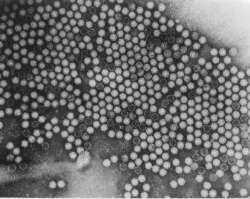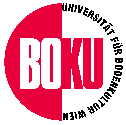|

German Version
Site map
FAIR 3889
Virus diseases
ACLSV
ApMV
ASGV
ASPV
PPV
PDV
PNRSV
ArMV
ToRSV
RpRSV
SLRSV
GFLV
GLRaV-1
GLRaV-3
LChV
CMLV
CRMV
CNRMV
CGRMV
ChTLV
CVA
Phytoplasma diseases
Pathogen collection
Pathogen detection
Pathogen elimination
Contact us
Related Sites
|
Virus diseases
 Fruit trees may be affected by a number of viruses and phytoplasmas causing
different diseases. They may be latent in many cases - showing symptoms only on
indicator species - or cause lethal or crippling effects.
Fruit trees may be affected by a number of viruses and phytoplasmas causing
different diseases. They may be latent in many cases - showing symptoms only on
indicator species - or cause lethal or crippling effects.
Yield losses may vary between cultivars and viral strains or depend on
environmental factors. They have considerable economic impact and are therefore of
major concern to worldwide phytosanitary agencies.
Since there exists no cure to an infected tree, preventive measures, i.e. the
use of virus free planting material is the best way to control their impact.
At least in the case of pome fruit material this will guarantee an improved
health status of the orchards over a considerable period of time.
Indeed it is necessary here to differentiate according to the mode of
transmission of the different viruses: filamentous viruses have no known
vectors and are propagated only vegetatively or by grafting. Therefore plants
that are free of filamentous viruses would remain healthy.
Plants infected with viruses transmitted by nematodes (Nepovirus), by pollen
(Ilarvirus) or by aphids (Potyvirus) need however continuous control
after sanitation (epidemiological survey, eradication and/or control of
the vectors). The same holds true for diseases caused by phytoplasmas.
If no pathogen-free planting material of a chosen cultivar is available, attempts
must be made to free the plant from the virus.
A foundation stock of mother plants must be maintained virus free under
conditions avoiding air- or soilborne re-infection, which is best achieved in an
insect-proof
screenhouse.
|



